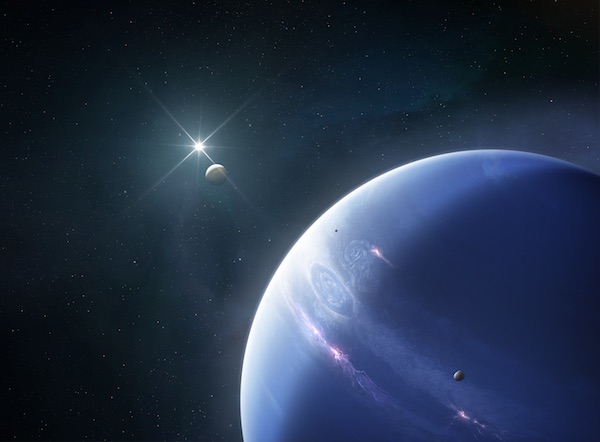See elusive planet Neptune in opposition tonight (Sept. 16)
The solar system's most distant planet will make its closest approach on Friday.

On Friday (Sept. 16), skywatchers will get the opportunity to view Neptune in opposition as it moves opposite the sun in the night sky.
Skywatchers will be able to see Neptune for the majority of the night, from around the time the sun sets to roughly the time the sun rises. The planet will appear in the constellation of Aquarius.
In New York, observers will see Neptune rising 21⁰ degrees above the southeastern horizon from around 9:07 p.m. EDT (0107 GMT on Saturday, Sept. 17) until 4:40 a.m. EDT (0840 GMT) on Saturday, Sept. 17. At this time the planet will move below the horizon in the southwest. (A fist at arm's length equals around 10 degrees in the sky.)
Related: Night sky, September 2022: What you can see tonight [maps]
This will be the best chance to see this elusive ice giant this year, as Neptune will be at its brightest as seen from Earth during the opposition with a magnitude of 7.8. This is due to the fact that it will be in its closest approach to our planet, also known as its 'perigee.'
Because Neptune is the furthest planet in the solar system from our star, sitting at about 30 times the distance from the Earth to the sun, its close approach won't make it appear much larger in the sky than usual.

The planet will still be around 2.7 billion miles (4.34 billion kilometers) away, and as a result will still appear as a star-like point of light to the naked eye, only becoming clearer when viewed with a telescope.
Get the Space.com Newsletter
Breaking space news, the latest updates on rocket launches, skywatching events and more!
At the time of Neptune's close approach to Earth, the solar system will be arranged in such a way that the sun, Earth, and Neptune will be in a line with our planet in between our star and its outermost world.
A planet's distance from the sun is an essential element of opposition. Only the more distant worlds — Mars, Jupiter, Saturn, Uranus, and Neptune — experience this astronomical arrangement.
For Jupiter, Saturn, Uranus, and Neptune, opposition occurs every year, but Mars only moves in opposition once roughly every two years.

Looking for a telescope to see Jupiter and the moon? We recommend the Celestron Astro Fi 102as the top pick in our best beginner's telescope guide.
Though the opposition of Neptune is an annual event, its timing shifts by a few days due to the size of the distant planet's orbit around the sun. Neptune takes around 165 Earth years to complete an orbit, meaning when our planet realigns with it each year during its journey around the sun, Neptune has moved forward a little in its orbit.
Skywatchers who miss Neptune in opposition this year will be able to spot it again on Sept. 19, 2023.
Astronomers who can't wait for this event can instead see Jupiter move into opposition on Sept. 26, 2022, when the gas giant will be closer to our planet than it has been for seven decades.
You can check out our guides for the best binoculars and the best telescopes to spot Neptune or any other planets when they're at opposition. If you're hoping to capture a good photo of Neptune, check out our recommendations for the best cameras for astrophotography and best lenses for astrophotography.
Editor's Note: If you snap a photo of Neptune and would like to share it with Space.com's readers, send your photo(s), comments, and your name and location to spacephotos@space.com.
Follow us on Twitter @Spacedotcom or on Facebook.
Join our Space Forums to keep talking space on the latest missions, night sky and more! And if you have a news tip, correction or comment, let us know at: community@space.com.

Robert Lea is a science journalist in the U.K. whose articles have been published in Physics World, New Scientist, Astronomy Magazine, All About Space, Newsweek and ZME Science. He also writes about science communication for Elsevier and the European Journal of Physics. Rob holds a bachelor of science degree in physics and astronomy from the U.K.’s Open University. Follow him on Twitter @sciencef1rst.









